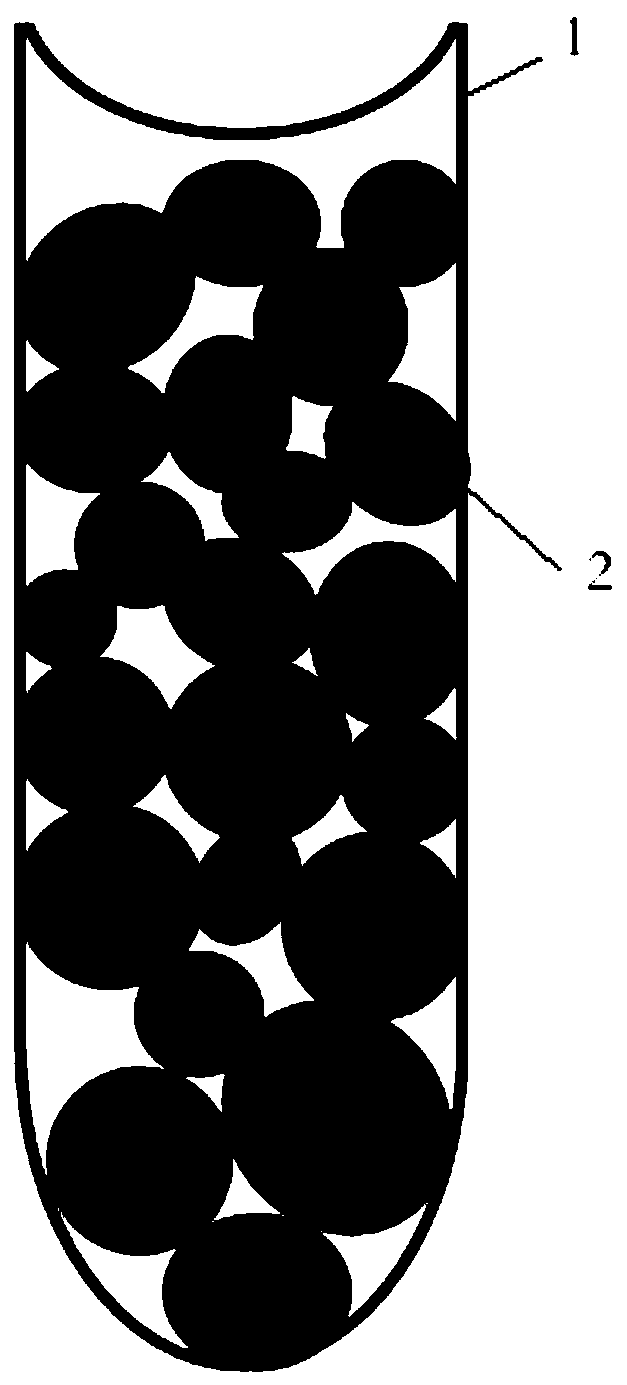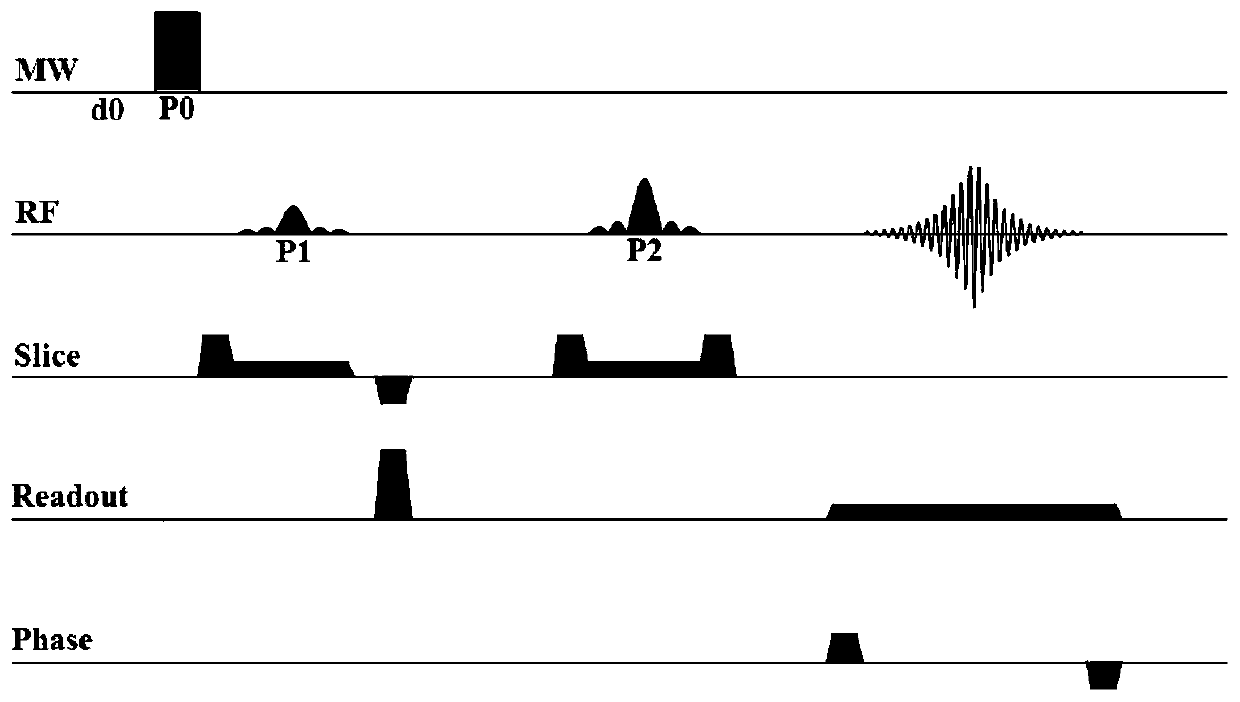Method for measuring oil-water distribution by using DP-MRI
A distribution method, oil-water technology, applied in the direction of using double resonance for analysis, double resonance for measurement, and nuclear magnetic resonance for analysis, etc., can solve the problems of limited application, increased test time, inability to effectively distinguish, etc., to ensure reliability. , the effect of improving sensitivity and short measurement time
- Summary
- Abstract
- Description
- Claims
- Application Information
AI Technical Summary
Problems solved by technology
Method used
Image
Examples
Embodiment 1
[0027] 1. Make glass bead models to simulate porous materials containing oil and water, glass bead models (such as figure 1 Shown) is made as follows: take a quartz tube 1 with a diameter of 10mm, one end of the quartz tube 1 is open, and the other end is sealed, and the glass beads 2 with a particle diameter of 3-5mm are randomly stacked in the 10mm quartz tube. Contains relaxation reagent MnCl 2 Water and mineral oil containing free radical TEMPO (tetramethylpiperidine nitrogen oxide) are layered to infiltrate the glass beads in the quartz tube. The upper layer is the oil phase and the lower layer is the water phase. TEMPO can strengthen the oil phase under DNP conditions. NMR signal, MnCl 2 It can enhance the relaxation of the aqueous phase and suppress the NMR signal of the aqueous phase under DNP conditions;
[0028] 2. Place the glass bead model in the sample area of a 0.06T DNP magnetic resonance imaging system. In this system, the static magnetic field is provided ...
PUM
 Login to View More
Login to View More Abstract
Description
Claims
Application Information
 Login to View More
Login to View More - R&D
- Intellectual Property
- Life Sciences
- Materials
- Tech Scout
- Unparalleled Data Quality
- Higher Quality Content
- 60% Fewer Hallucinations
Browse by: Latest US Patents, China's latest patents, Technical Efficacy Thesaurus, Application Domain, Technology Topic, Popular Technical Reports.
© 2025 PatSnap. All rights reserved.Legal|Privacy policy|Modern Slavery Act Transparency Statement|Sitemap|About US| Contact US: help@patsnap.com



